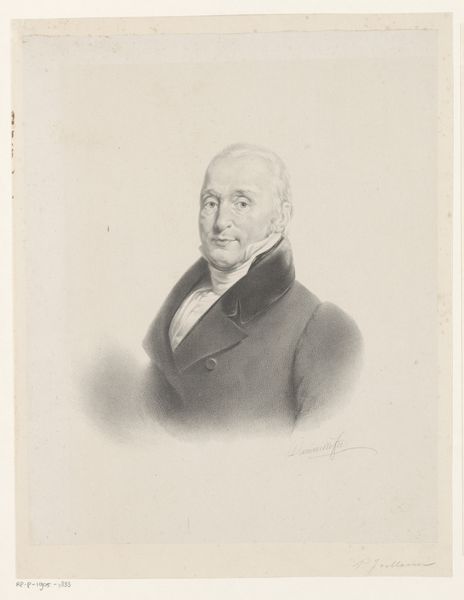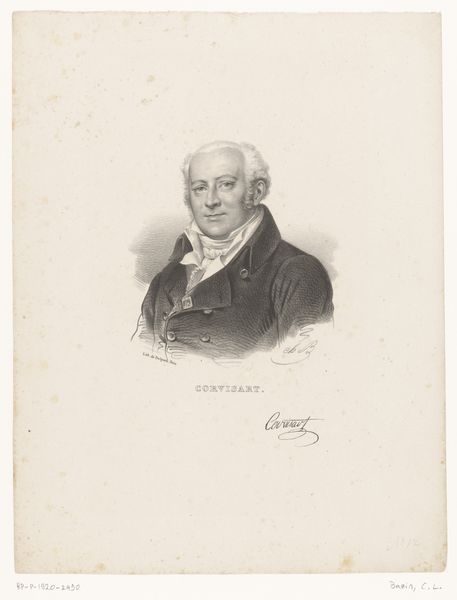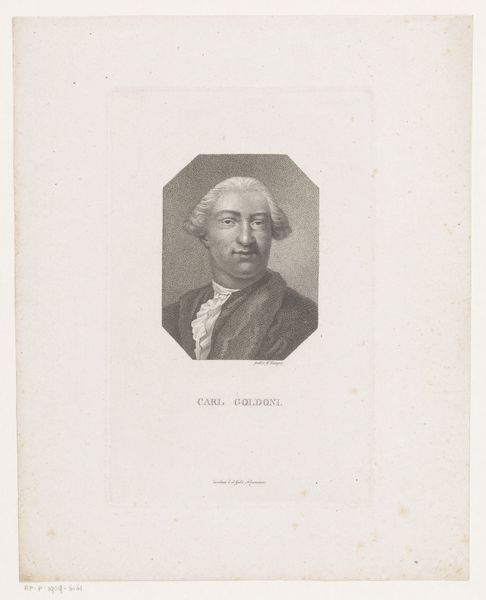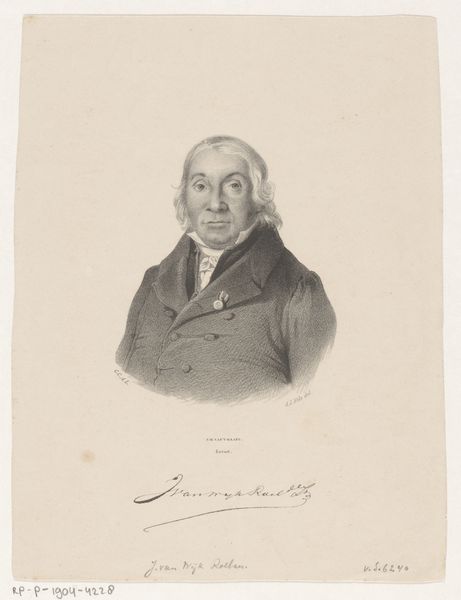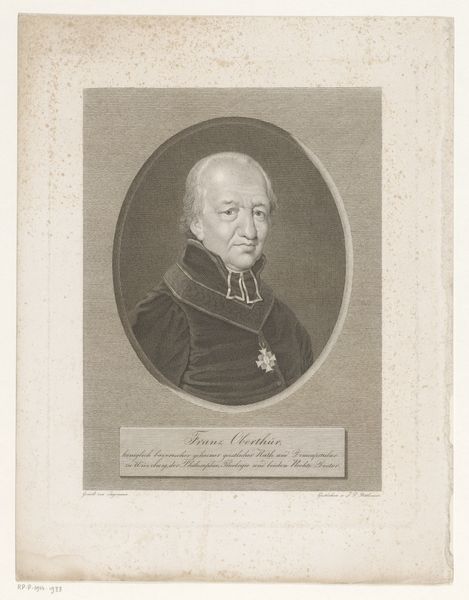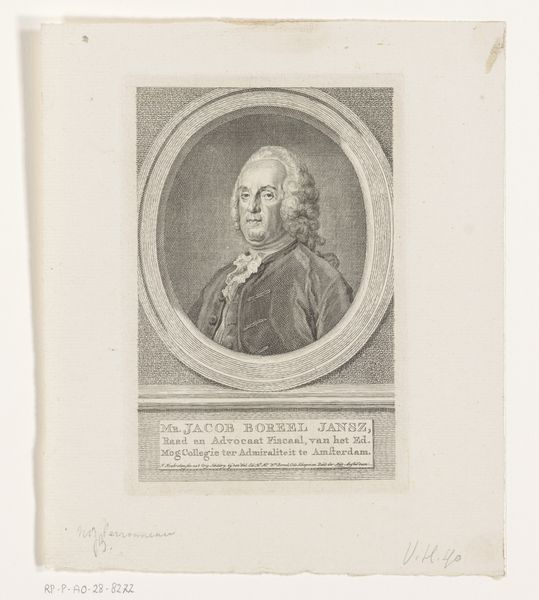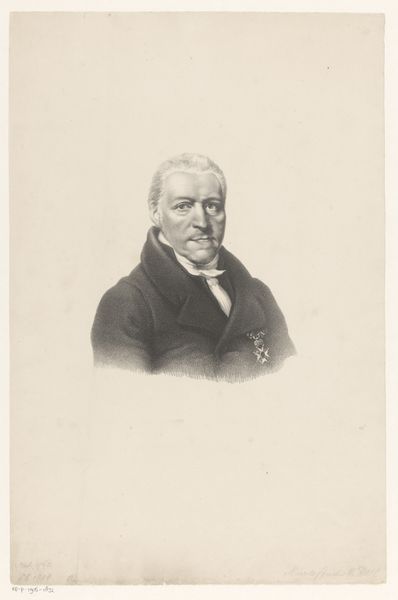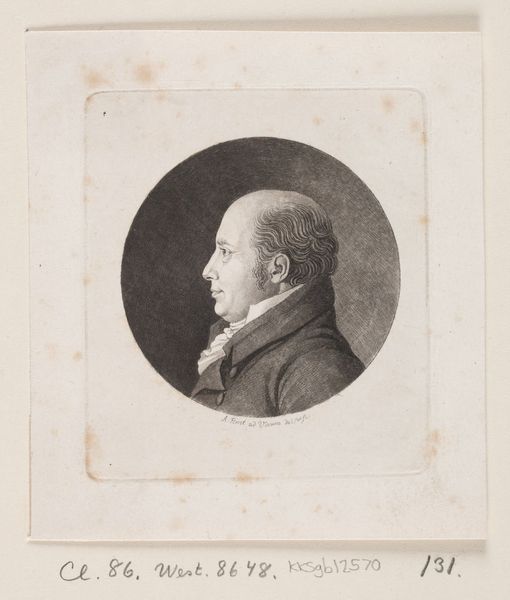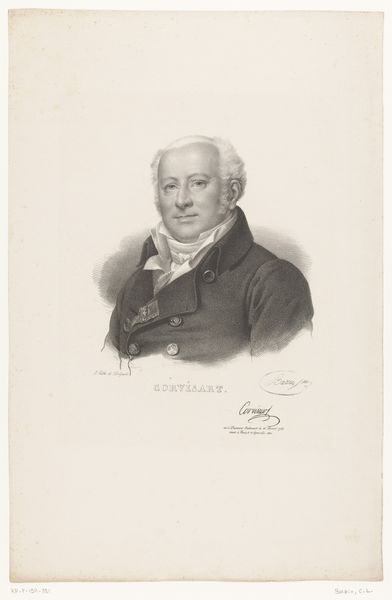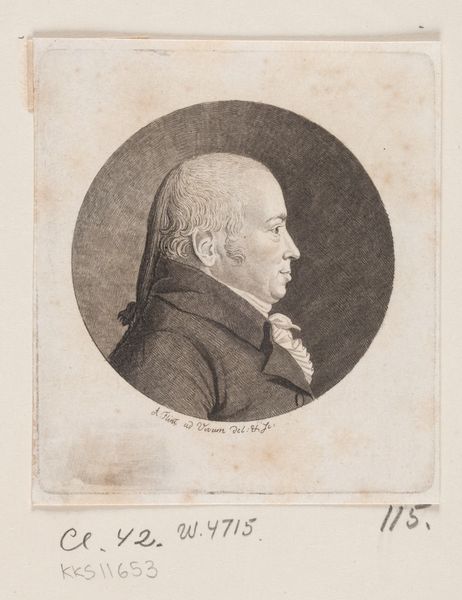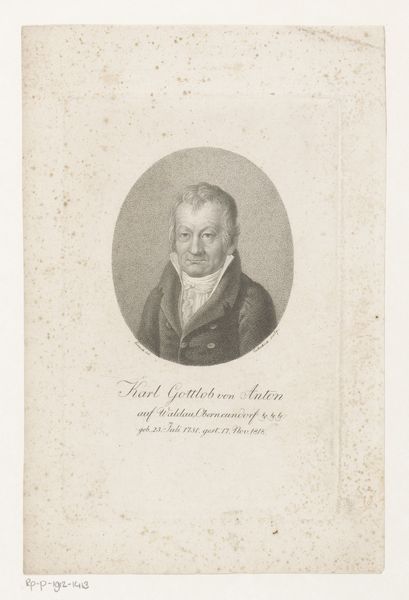
engraving
#
portrait
#
neoclacissism
#
old engraving style
#
portrait reference
#
framed image
#
tonal art
#
academic-art
#
engraving
#
realism
Dimensions: height 198 mm, width 144 mm
Copyright: Rijks Museum: Open Domain
Curator: Let’s turn our attention to a rather striking portrait. What we have here is Johann Friedrich Bolt’s 1823 engraving, "Portret van Karl August Wilhelm Berends," currently held at the Rijksmuseum. Editor: The sitter’s gaze is intense, isn't it? There's an immediate feeling of gravity and perhaps a hint of self-importance. The tightly framed oval composition really focuses attention on the face and the stark formality of his attire. Curator: Absolutely. Bolt, known for his expertise in portrait engravings, meticulously renders Berends, who was a prominent physician. This work embodies the Neoclassical aesthetic, which heavily influenced portraiture during this era. The clarity of line and emphasis on form are hallmarks of that movement. But if we move beyond aesthetics, the act of creating and circulating such a portrait reinforces power structures. This image elevates Berends, embedding his status into the public consciousness. Editor: That's a good point. Look at the precision of the lines; there's an almost photographic realism, albeit translated through the medium of engraving. The way Bolt captures the texture of his coat and the delicate rendering of his facial features suggests a meticulous, almost reverential, approach. It begs the question of who such representations exclude – whose stories aren’t deemed worthy of such detailed preservation? Curator: Precisely. While celebrating individual achievements, these portraits, mass produced through engraving, became a powerful means of cementing particular ideals and maintaining societal hierarchies. Engravings, due to their reproducibility, were relatively accessible, but access doesn't necessarily equate to equitable representation. Editor: Considering the date, it is also hard to ignore the changing notions of representation and power it showcases, if it were produced today. The work’s historical context adds depth and encourages critical analysis, something art does so powerfully. It allows to study how authority, even when visually celebrated, doesn't automatically translate to broader social equity. Curator: Indeed. So this portrait is more than a record of likeness; it offers insight into the dynamics of power and visibility within 19th-century society. Thank you. Editor: Thanks, that was illuminating. This work is a compelling example of how studying the art from the past, informs conversations about representation and social justice today.
Comments
No comments
Be the first to comment and join the conversation on the ultimate creative platform.
